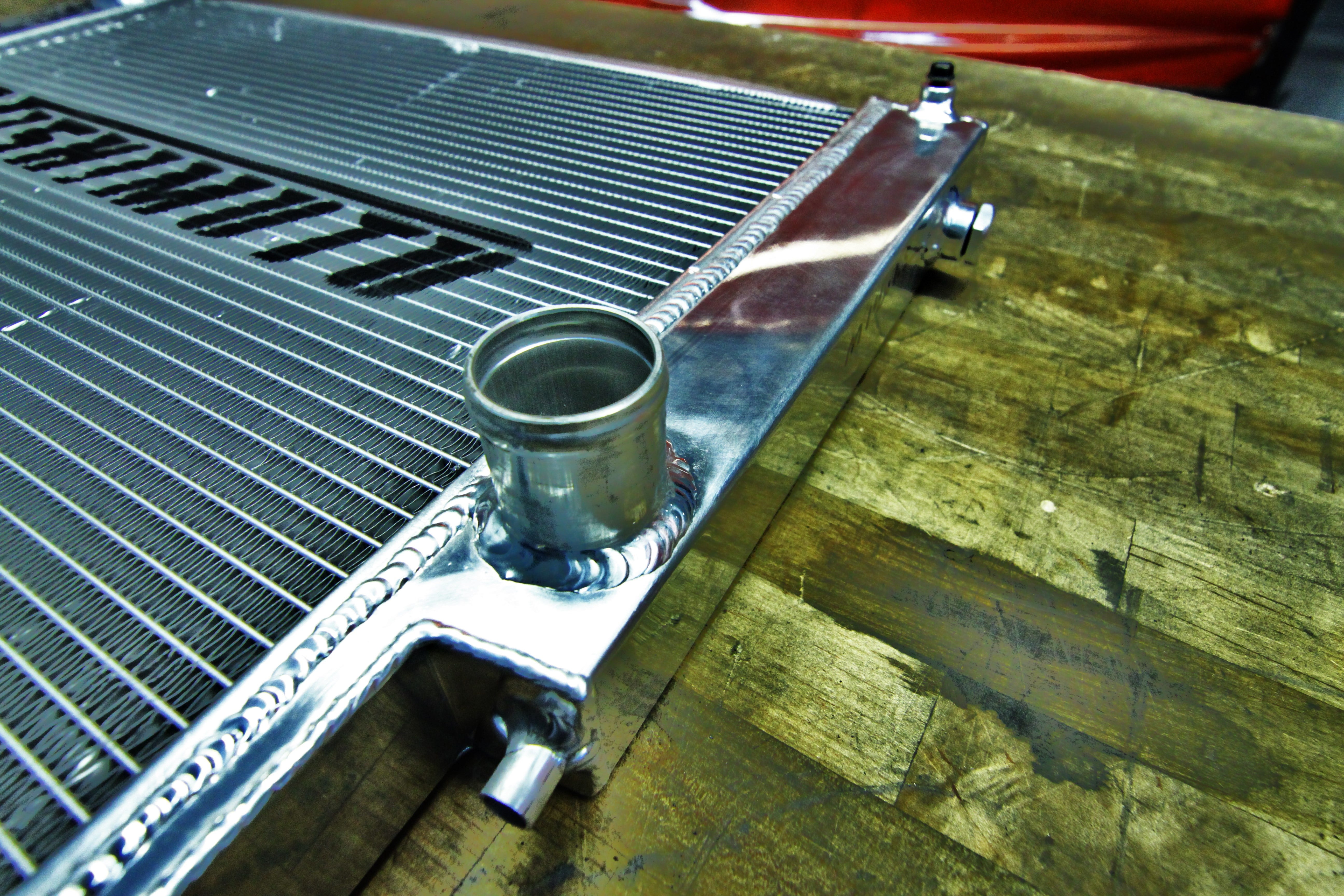
Mishimoto BMW E30/E36 X-Line Radiator, Part 4: Cooling Efficiency Results
Interested in purchasing this BMW E30/E36 aluminum radiator? Check out the product page for more information!
Mishimoto BMW E30/E36 X-Line Performance Aluminum Radiator
The testing results are in! First, a quick comparison of the fluid capacity improvements the Mishimoto X-line radiator provides.
Stock Radiator Capacity: 0.6 gal (2.27L)
Mishimoto X-Line Radiator Capacity: 1.15 gal (4.35L)
This is an increase in capacity of 91%! This additional fluid, combined with our highly efficient core design, should easily produce great gains in cooling efficiency. Let's evaluate our charts obtained from the testing data. First up, our raw temperature data from both rounds of testing.

Stock radiator testing data
The stock radiator is reasonably efficient, being more than adequate for normal street use and occasional track use. Extended track use, however, could present some issues. Our stock testing showed average inlet temperatures around 212°F (100˚C) and average outlet temperatures around 160°F (71˚C).
Stock Radiator
Inlet Temperatures: 212°F (100˚C)
Outlet Temperatures: 160°F (71˚C)
Now, let's see how the Mishimoto radiator performed under nearly identical conditions.

Mishimoto radiator testing data
As you can see, the Mishimoto radiator outperformed the stock unit significantly! Inlet temperatures hover right around 209°F (98˚C) and are very similar to those of the stock unit. The big change is in the area we wanted to see, which is in the outlet temperatures. Recorded radiator outlet temperatures average around 130°F (55˚C)! This is a huge decrease compared to the stock radiator.
Mishimoto Radiator
Inlet Temperatures: 209°F (98˚C)
Outlet Temperatures: 130°F (55˚C)
Next, for an easy comparison, we created a chart showing both the stock and Mishimoto radiator outlet temperatures.

Outlet temperature comparison
This chart depicts our temperature decreases of up to 30°F [16˚C] compared to the stock radiator. Our last chart, the comparison of radiator efficiency, is the most important for our testing purposes.

Radiator efficiency comparison
For this chart, we used the inlet and outlet temperatures during testing to calculate the core efficiency. Knowing that our radiator provided lower outlet temperatures, we knew that our efficiencies would be much better than the stock compared to the stock radiator unit, the Mishimoto radiator is, on average, 20% more efficient at transferring heat. These are the gains we wanted to see during our testing. Success!
Now that we had a great-fitting product that performed to our standards, it was time to recap our goals to ensure this product was what our customers wanted.
Project Objectives
- Core must be as thick as possible while still retaining the stock mechanical fan.
Our engineering team designed this radiator with a 57mm core (23mm thicker than stock), which provides improved fluid capacity and improved heat transfer, yet still retains functionality with the stock mechanical fan. We tested this product to ensure all clearances were safe for extended use.
- Must be a direct fit for the 88-99 BMW E30/E36 vehicles with 6-cylinder engines.
This product features all critical dimensions and components with the stock radiator. We test fit this radiator as well, to ensure our data were accurate. All factory components bolt to this radiator just as they do with the stock radiator.
- Must provide proven temperature benefits compared to the stock radiator.
The Mishimoto radiator provided a 30°F (16˚C) drop in radiator outlet temperatures compared to the stock unit. This temperature drop translates to a 20% improvement in radiator efficiency with the Mishimoto radiator.
- Incorporate dense core composition for improved heat transfer
Our engineers designed an extremely dense core with a large increase in fin surface area, which provides greater heat transfer resulting in substantial cooling benefits.
That's it, another successful project in the books. We now have a completed product, ready for mass production. We do intend to offer this radiator as a group buy for those interested, so stay tuned for this.
We leave you with a quick dyno video featuring the M3 we used during testing. This particular pull was conducted to test the effect of mechanical fan removal on power output. We will have more details on the test when we post our build thread for our electric fan conversion kit for the E36.
Thanks for reading!











